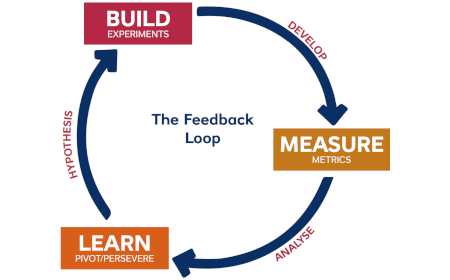
Start questioning what you know
Give yourself some time and write down any assumptions that you've made about your business so far.
This could be anything from ‘I think my typical customers are aged between 25 and 35 to ‘I believe my customer values the functionality and convenience of my service.’
Then question:
- How do I know this?
- Do I know this for certain?
- Have I tested that?
- Do I need to test this further?
Challenge your assumptions
What assumptions have you made about the following things?
- Your value proposition
- The product/market fit
- Your customers
- The channels that you use to reach your customers
- Marketing channels
- Sales channels
- Distribution channels
- Feedback channels
- The type of relationship that your customer wants from you
Take your questions further
If you need a bit of help, you could work around each section of the Business Model Canvas highlighting the assumptions you’ve made about the rest of your business model. Include areas like: key activities, resources and partners, cost structure and revenue streams.
Once you’ve done this, you’ll have a list of assumptions that you’ve made about your business. But it’s important that you don’t just do this once, and forget about it – asking yourself questions like this should be part of a continuous process that you adopt within your business practices.

Fail fast, fail cheap, fail smart
How can you test your assumptions and your overall business model so you stay adaptable to your customer needs? The feedback loop is the answer – it’ll help you test and validate your business following a short, cyclical process, rather than a more traditional linear development. See how it works in the diagram.
Other techniques
There’s lots of different ways people use to gain feedback and insight including:
- Using the customer discovery techniques
- Rapid prototyping
- MVPs (minimum viable product)
- Design sprints
- Agile sprints
- Design thinking
All the techniques follow the same basic principles of building something to test, measuring the feedback and learning from the findings.
Test and learn
Think about the previous assumptions you’ve highlighted and think about what techniques you might use to test those assumptions, and how you could do that. Try answering the following questions for each.
- What specifically do you need to find out?
- Who has that information?
- How can you access that information?
- What techniques can you use?
What’s an MVP?
A minimum viable product is the simplest, most minimal form of your product or service that you can put out to market to test some key assumptions about your business.
It could help you:
- Get customer feedback
- Make mistakes on a smaller scale
- More easily explain what you’re trying to do
- Understand the financial implications
- Get a better idea of every element of your product – marketing, customer acquisition, etc.
What’s a pivot?
A pivot is a change in strategy without a change in vision.
Why is it important?
It’s all about falling in love with the problem, not the solution.
As an entrepreneur you need to be open and not only willing to listen to feedback, but also seek it out, even if it's different from what you originally thought.
Objectively listening to feedback will allow you to change direction, or pivot when you need to.
More ways to build your business
Now you’ve taken the first steps to validation and assumption testing success, you could check out:
- Do your customer discovery
- Make sure you're happy with your customer segments
This material is published by NatWest Group plc (“NatWest Group”), for information purposes only and should not be regarded as providing any specific advice. Recipients should make their own independent evaluation of this information and no action should be taken, solely relying on it. This material should not be reproduced or disclosed without our consent. It is not intended for distribution in any jurisdiction in which this would be prohibited. Whilst this information is believed to be reliable, it has not been independently verified by NatWest Group and NatWest Group makes no representation or warranty (express or implied) of any kind, as regards the accuracy or completeness of this information, nor does it accept any responsibility or liability for any loss or damage arising in any way from any use made of or reliance placed on, this information. Unless otherwise stated, any views, forecasts, or estimates are solely those of the NatWest Group Economics Department, as of this date and are subject to change without notice.

